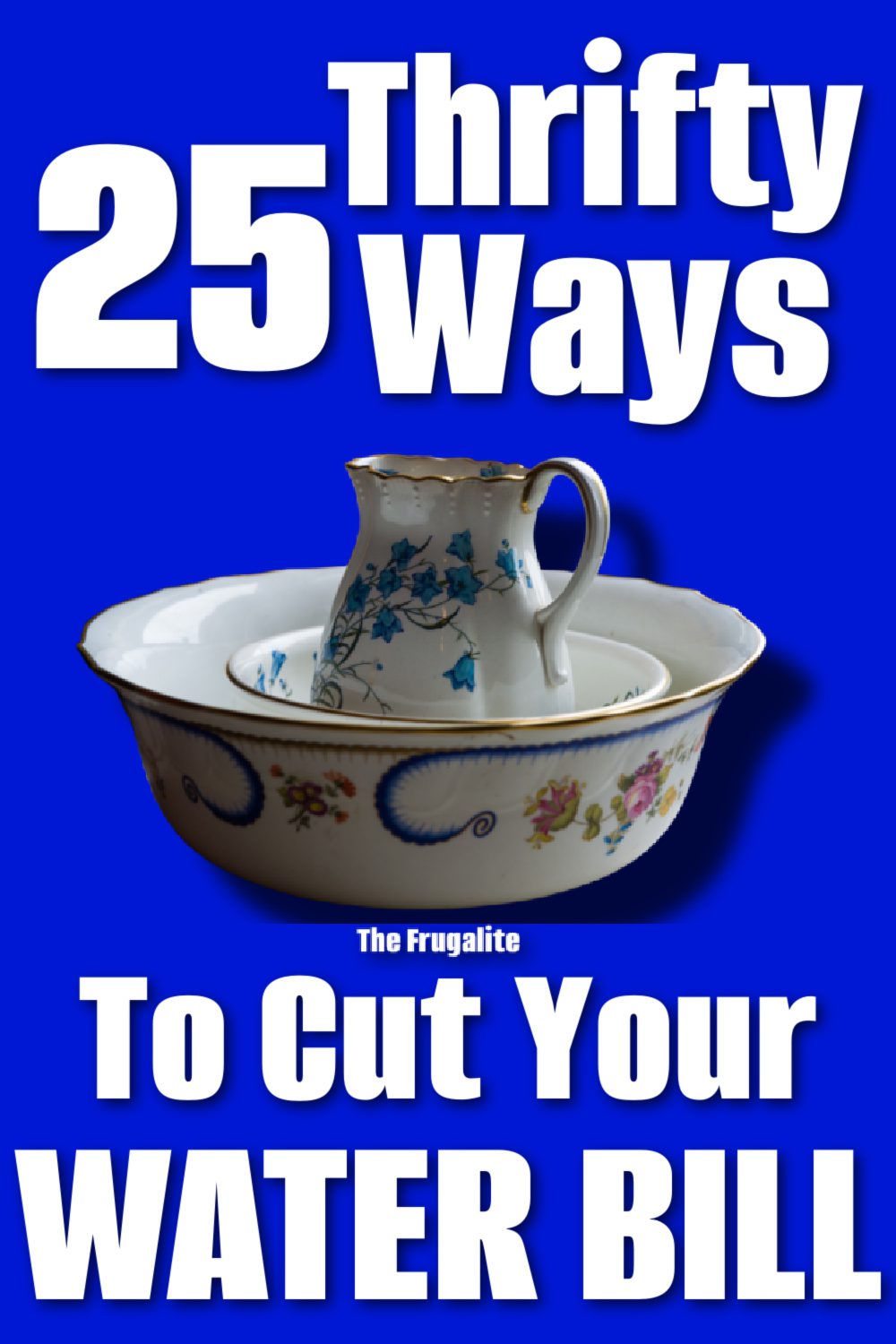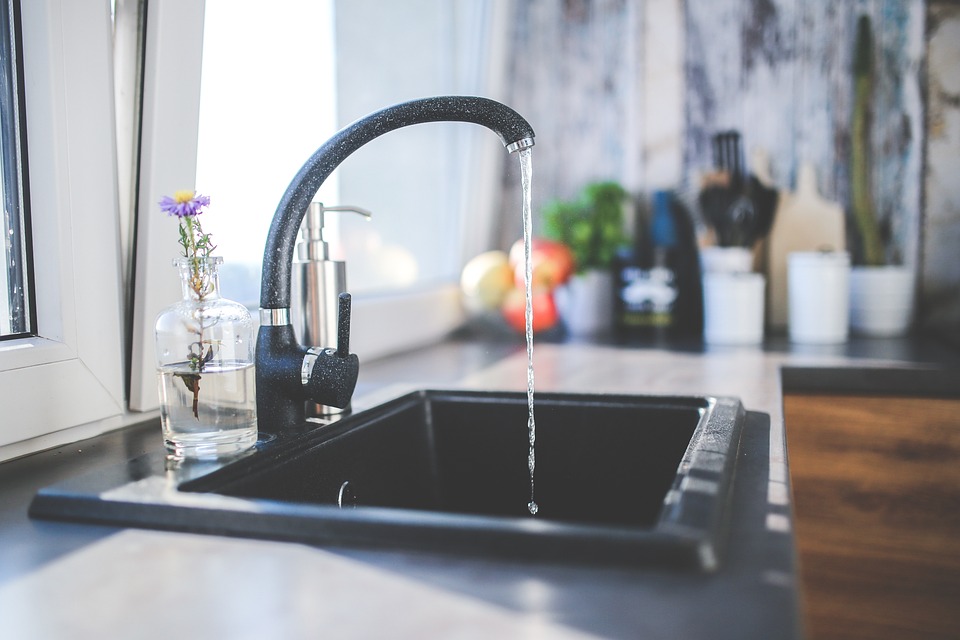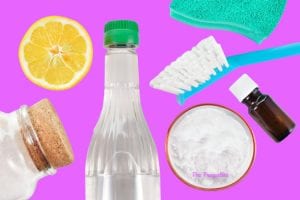(Psst: The FTC wants me to remind you that this website contains affiliate links. That means if you make a purchase from a link you click on, I might receive a small commission. This does not increase the price you’ll pay for that item nor does it decrease the awesomeness of the item. ~ Daisy)
By the author of The Ultimate Guide to Frugal Living
and The Prepper’s Water Survival Guide
When I wrote my book, The Prepper’s Water Survival Guide, I channeled my granny for the water conservation section. When she was a little girl in the early 1900s, her chore was going outside, whether it was warm or cold, and pumping water from the yard into a bucket and bringing it inside.
Because it was so much work to pump that water and lug it in, she made every drop count. I remember when she was in her 80s, she was still incredibly conservative with her water use, even though she’d had unlimited amounts flowing from the taps for years.
I guess lessons like that really make an impression. And it made an impression on me, too. I remember so many little things she did that I just thought were quirky and old-fashioned at the time, which make a lot more sense now that I’m trying to keep my own bills low.
Without further ado, here’s a list inspired by my granny.
Here are a few suggestions for reducing the amount of water you use on a daily basis. The list is by no means comprehensive, and not all of these solutions will work for everyone’s situation.
Some tips from those who live without running water
First, take notes from those who live without running water. Just think: If you had to physically acquire every drop of water used in your home, whether by pumping it from a well or lugging it from a water source, you’d already be taking many of these lower-tech steps.
- Reuse cooking water – if you have boiled pasta or vegetables, use this water for making soup. You will have retained some of the nutrients and flavor from the first thing you cooked in the water.
- Landscape with plants that grow naturally in your area. They should require little in the way of additional watering.
- Grow organic. Chemical fertilizers can increase a plant’s need for water.
- Wash some clothing by hand – it will use far less water than your washing machine. Be sure and save the water for other uses.
- When shaving, rinse your razor in a cup instead of under running water.
- Skip the dishwasher and do the dishes by hand.
- Instead of running water over each dish to rinse, fill one side of the sink or a basin with rinse water containing a splash of white vinegar. Running water uses up to 4 gallons per minute.
- Use a glass of water to brush your teeth instead of running the tap the entire time. Running water uses up to 4 gallons per minute.
- Use organic mulch in your garden to help retain moisture.
- Wash produce in a basin of water instead of under running water.
- When you clean out your fish tank, reserve the water for your garden. Your veggies will love the nutrient boost!
- Harvest rainwater for your garden.
Conserving water with the modern conveniences
These next options assume that running water is not an issue but that you still wish to conserve.
- Use a brick, a filled plastic bottle, or a float booster to fill space in the back of the toilet tank. This reduces the amount of water used in each flush.
- Speaking of flushing, you may have heard the rhyme, “If it’s yellow, let it mellow. If it’s brown, flush it down.”
- Devise a gray water catchment system for your shower, your washing machine, and your kitchen. This water can be used for flushing, watering plants, and for cleaning.
- Take shorter showers – try to reduce them to 5 minutes – this can save up to 1000 gallons per month! If you can’t handle a 5-minute shower every 2 minutes, you shorten your shower time by can save approximately 150-200 gallons per month.
- Install a water-saving shower head.
- When you have a shower, plug the tub. Use the water you collect for handwashing laundry. (See the next suggestion!)
- If you do use a dishwasher, run it only when it’s completely full – this can save you 1000 gallons per month.
- If you drop a tray of ice cubes, pop them into a pet dish or into your potted plants.
- When washing your hands, dip them in a basin of water, lather up, then rinse under running water. Running water uses up to 4 gallons per minute.
- Upgrade your faucets with inexpensive aerators with flow restrictors.
- Use a nozzle on your hose so that you are only putting water where you want it, not spraying it uselessly as you walk to the garden.
- Repair leaks. At the rate of one drip per second, that adds up to 5 gallons per day…literally down the drain.
- If you are buying new items for your home, opt for those which use water more efficiently, like front-loading washing machines and low-flush toilets.
How do you conserve water?
Have you ever tried any of the suggestions listed here? Do you have suggestions to add? Let us know how you reduce water usage in the comments.
About Daisy
Daisy Luther is a coffee-swigging, adventure-seeking, globe-trotting blogger. She is the founder and publisher of three websites. 1) The Organic Prepper, which is about current events, preparedness, self-reliance, and the pursuit of liberty; 2) The Frugalite, a website with thrifty tips and solutions to help people get a handle on their personal finances without feeling deprived; and 3) PreppersDailyNews.com, an aggregate site where you can find links to all the most important news for those who wish to be prepared. Her work is widely republished across alternative media and she has appeared in many interviews.
Daisy is the best-selling author of 5 traditionally published books, 12 self-published books, and runs a small digital publishing company with PDF guides, printables, and courses at SelfRelianceand Survival.com You can find her on Facebook, Pinterest, Gab, MeWe, Parler, Instagram, and Twitter.













7 thoughts on “25 Thrifty Ways to Cut Your Water Bill”
Awesome tips Daisy. The thing that stood out the most after I read this was running water uses up 4 gallons per minute.
That 4-gallons of water figure has other uses. Start by heating a pot large enough to hold 4-gallons of water until that reaches 120°F Then learn how to take a sponge bath with that water. It’s an even more economical variation on the 3rd worlder’s bucket bath.
When cooking, learn how to cook over rising steam. One of the non-obvious benefits of that is that super cleaned water (whether filtered, distilled, or just city supplied) is not needed. Even dirty water will quickly boil off most chemical contamination after which you can steam bake or steam cook zillions of things. The Chinese and the French historically have some of the best steam cooking how-literature. Once you finish cooking, you can still re-use that water for many things.
An even cheaper method is to use solar gear for cooking, for heating water for dishwashing, etc. Since there are typically a few cloudy days (but not the majority) in any month, one should regard solar as a method to conserve on the uses of stored fuels (or municipal bills) as much as possible — thereby minimizing expenses of such fuels as weather permits.
Lots of entire families along the US/Mexico border where the water supply is very salty (and politicians won’t consent to proper water cleaning processes) have been taught how to DIY build their own passive solar water distillers. When completed such distillers look like a large pool table with a slightly slanted glass top. The table is water proofed so it can be filled with contaminated water that the sun’s heat will evaporate. It then condenses on the underside of that glass top and drips down that angle over to the lowest edge where a cut open PVC tube catches that super-cleaned water and pipes it into some large container. Here’s one very good how-to book:
https://www.amazon.com/DIY-Distiller-Yourself-Purify-Non-Electric-ebook/dp/B0181Y1OLA/ref=sr_1_4
There are some lesser detailed videos on YouTube:
Another way to conserve is to hand wash one’s laundry in cold water. Most [not quite all] types of clothes can last longer and cooperate well with detergent that can cope with cold water. The Walmart-supplied ALL brand is one of them. There are also DIY detergents for cold water usage online. The benefit is two-fold — longer lasting clothes and fabrics and saving on that unnecessary water heating bill. I’ve even seen a few clothes recently labeled for cold water washing ONLY.
Another way to conserve water is to learn to make (or buy) and use composting toilets. It’s a very popular method with RVers and other nomads where water conservation is a major benefit.
–Lewis
when running faucet to get hot water, catch that water in watering can or kitty litter plastic jug for the garden. washing dishes? soak in 1/2 the sink, wash, stack like a puzzle, rinse from top of stack . uses less water
Many good tips.
Before washing dishes by hand I scrape off the plates using a spatula not rinsing with water.
Can’t remember the last time I let water run while brushing my teeth.
Hand washing – dribble a little water, turn off, add soap, wash well, rinse quickly.
Shower every other day with the 5min shower.
Have a rain water containment system for watering the veggie growing containers – don’t water anything in the landscape.
Being very conservative with our water usage we use 1 unit monthly at a price of $80 for water & sewer – Florida water is expensive!!
I’ve said this before: DO NOT put a brick in a toilet tank. This isn’t 1982. Toilet tanks used to use three gallons of water a flush, now they use half that (or less, like my dual flush toilet). Newer toilets have small tanks, and putting something as LARGE as a brick in there will damage it. I wish preppers would stop using this example. It worked a generation ago. Not now. Lower flow toilets eliminate the need for that disgusting (and unhygienic) “if it’s yellow leave it mellow” rhyme.
Honestly and truthfully, a lot of this information is long out of date. For example, the MAXIMUM flow rate for water from either a kitchen or bathroom sink is 2.2 gallons. That’s with your tap on full. If you’re shaving or brushing your teeth, your water flow is more like 1 gallon a minute. You can do better, but there’s no reason to make people panic with outdated information.
Oops… that’s what I get for typing so quickly!
The max flow rate for water from either a kitchen or bathroom FAUCET is 2.2 gallons.
I’ve been trying to shorten my showers. Also get wet, turn off water, soap up, turn back on to rinse. Or lower the flow while washing … I fill gal jugs with water to water my potted plants in early morning-I let them sit out overnight to evaporate the chemicals in the water.